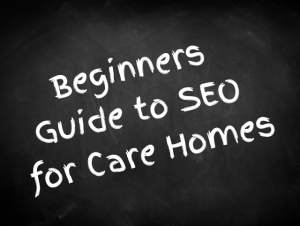
Key Takeaways
- Local SEO is vital for care homes – optimize your Google Business Profile and target location-specific keywords
- Mobile-friendly websites with fast loading times are essential for ranking well
- Quality content that addresses families’ concerns builds trust and improves search visibility
- Technical SEO elements like proper schema markup help search engines understand your care services
- Regular monitoring of analytics helps track performance and adjust strategies accordingly
- Voice search optimization is becoming increasingly important for elderly users and their families
Outline
- Understanding SEO Basics for Care Homes
- Local SEO: The Foundation of Care Home Marketing
- On-Page SEO Elements That Matter Most
- Creating Content That Connects with Families
- Technical SEO for Care Home Websites
- Mobile Optimization: A Must for Modern Care Homes
- Measuring SEO Success: Key Metrics to Track
- Future SEO Trends for Care Homes
Understanding SEO Basics for Care Homes
SEO might sound scary if you’ve never done it before. But it’s really just about making your care home easy to find online when families need your services. Think of it as putting up good signposts that lead people to your door.
When someone types “dementia care near me” or “nursing home in Manchester” into Google, will they find you? That’s what SEO helps with. It’s not magic – it’s just making sure your website speaks the same language as the people looking for you.

The basics of SEO for care homes include:
- Using words on your website that match what people search for
- Making sure your website works well on phones (cuz lots of people search that way)
- Getting other trusted websites to link to yours
- Having good information that helps families make decisions
One care home manager told me, “We didn’t realize how many people were finding us through Google until we started paying attention to our SEO. Now we get twice as many enquiries from our website.”
SEO isn’t just a one-time thing either. Search engines change how they work, and what families are searching for changes too. That’s why it’s important to keep learning and adjusting your approach.
Digital marketing services for care homes can help you navigate these changes and keep your care home visible to the families who need you most.
Local SEO: The Foundation of Care Home Marketing
Local SEO is super important for care homes cuz most residents come from nearby areas. When families look for care, they almost always include their location in the search.
The first thing you need to do is claim and optimize your Google Business Profile. This free listing shows up in Google Maps and local search results. Make sure you:
- Add your exact address and service area
- Choose the right categories (like “Nursing Home” or “Memory Care Facility”)
- Upload good photos of your care home
- List all your services clearly
- Keep your opening hours up to date
- Respond to reviews (both good and bad ones)
“Getting our Google Business Profile sorted made a huge difference,” says Jane, a care home owner in Leeds. “We started showing up in the map results, and enquiries went up by 30% in just two months.”
Local keywords are really important too. These are search terms that include locations, like:
- “dementia care homes in Birmingham”
- “respite care near Nottingham”
- “nursing homes in North London”
Make sure these kinds of phrases appear naturally on your website, especially on your homepage and contact page.
Another big part of local SEO is getting reviews. When families see lots of positive reviews, they’re more likely to trust you. Send follow-up emails to families who’ve had good experiences and ask if they’d mind leaving a review. Just don’t be pushy about it!
Local directories are worth getting listed in too. Make sure your care home is on:
- Carehome.co.uk
- NHS Choices
- Age UK’s directory
- Your local council’s care directory
The key thing with all these listings is consistency – make sure your name, address, and phone number are exactly the same everywhere.
On-Page SEO Elements That Matter Most
On-page SEO means optimizing the actual content and code on your website pages. For care homes, some elements matter more than others.
Title tags are super important. These show up in search results and browser tabs. Each page should have a unique title that includes relevant keywords. For example:
- Homepage: “Oakwood Care Home | Quality Dementia Care in Sheffield”
- Services page: “Our Care Services | Nursing, Respite & Dementia Care | Oakwood”
- Contact page: “Contact Oakwood Care Home | Book a Visit Today”
Keep titles under 60 characters so they don’t get cut off in search results.
Meta descriptions are the little summaries that appear under the title in search results. They don’t directly affect rankings, but they do affect whether people click through to your site. Write clear, inviting descriptions that tell people what they’ll find on the page.

Headings (H1, H2, H3 tags) help organize your content and tell search engines what’s important. Every page should have one main H1 heading, with H2s and H3s for subsections. Include keywords naturally in these headings.
Images need optimization too. Many care homes make the mistake of uploading massive photos that slow down their websites. Resize images before uploading, and always add alt text that describes the image (this helps visually impaired users and search engines).
“We didn’t realize our images were slowing down our website until we checked our page speed,” admits Robert, a care home marketing manager. “After optimizing them, our pages loaded twice as fast, and our bounce rate dropped significantly.”
Internal linking is often overlooked but really helpful. Link between relevant pages on your site using descriptive anchor text. For example, when mentioning dementia care on your services overview page, link to your dedicated dementia care page.
URL structure matters too. Keep URLs short and descriptive:
- Good: yourcarehome.co.uk/services/dementia-care
- Not so good: yourcarehome.co.uk/page.php?id=27&cat=4
Blogging and content management for care homes can help you implement these on-page elements effectively across your website.
Creating Content That Connects with Families
Content is king in SEO, especially for care homes. Families making care decisions need lots of information and reassurance. Good content helps them while also helping your search rankings.
The most important thing is to write for real people, not search engines. Yes, include keywords, but only where they fit naturally. Forced keywords make your content sound weird and can actually hurt your rankings.
What kinds of content work best for care homes?
- Service pages that clearly explain different types of care you offer
- FAQ pages that answer common questions about care, funding, and moving in
- Blog posts about care topics, activities in your home, and staff achievements
- Family guides to help with difficult decisions (like when it’s time for care)
- Virtual tours with descriptive text about your facilities
- Staff profiles that showcase your team’s experience and compassion
“Our guide to funding care options gets more traffic than any other page,” says Sarah, a care home director. “It ranks well because it genuinely helps people with a complicated topic.”
When creating content, think about the journey families go through. They might start with broad searches like “when is it time for a care home” before moving to more specific searches like “dementia care homes in [your area].”

Case studies and testimonials are powerful too. Real stories about how you’ve helped residents and families build trust and provide unique content that search engines value.
Remember to update your content regularly. Search engines prefer fresh content, and information about care funding or regulations changes often. Set a calendar reminder to review key pages every few months.
Video content is becoming increasingly important too. Consider creating:
- Virtual tours of your home
- Interviews with staff members
- Activity highlights
- Testimonials from families
Always add a text transcript for videos – this helps with accessibility and gives search engines text to index.
Email marketing for care homes can help distribute your content to interested families and drive traffic back to your website.
Technical SEO for Care Homes
Technical SEO sounds complicated, but it’s really about making sure your website works well for both users and search engines. For care homes, getting these technical elements right can make a big difference.
Website speed is super important. If your site takes more than a few seconds to load, people will leave – especially on mobile phones. You can check your site speed with free tools like Google PageSpeed Insights.
Common speed issues for care home websites include:
- Images that are too large
- Too many plugins or scripts
- Cheap hosting that’s slow to respond
- No caching setup
“We didn’t realize our website was so slow until we tested it,” says Tom, a care home manager. “After fixing the speed issues, people stayed on our site longer and we got more enquiries.”
Mobile-friendliness is non-negotiable these days. More than half of searches happen on phones, and Google primarily uses the mobile version of your site for ranking. Make sure your care home website:
- Displays properly on all screen sizes
- Has buttons big enough to tap easily
- Doesn’t require horizontal scrolling
- Has text that’s readable without zooming
Security is important too. Make sure your website uses HTTPS (you’ll see a padlock in the browser address bar). This encrypts data and is a ranking factor for Google.
Schema markup is a bit technical but really helpful for care homes. It’s special code that helps search engines understand specific information about your business. For care homes, useful schema types include:
- LocalBusiness markup (for address and contact details)
- Organization markup (for your care home details)
- Review markup (for displaying star ratings in search results)
- FAQ markup (for frequently asked questions)
Site structure matters too. Make sure:
- Every important page is reachable within 3 clicks from the homepage
- You have a logical navigation menu
- You include a sitemap.xml file to help search engines find all your pages
- You use breadcrumb navigation to show where users are on your site
Design, development and delivery for care homes can help ensure your website meets these technical requirements.
Mobile Optimization: A Must for Modern Care Homes
Mobile optimization isn’t just a nice-to-have anymore – it’s essential for care homes. Most people searching for care services do it on their phones, especially adult children who are often busy and on the go.
Google now uses mobile-first indexing, which means it primarily looks at the mobile version of your website to decide how to rank you. If your site doesn’t work well on phones, your rankings will suffer.
What makes a good mobile experience for care home websites?
- Responsive design that adjusts to different screen sizes
- Large, easy-to-tap buttons (especially for “Call Now” and “Book a Visit”)
- Simple navigation that works with thumb scrolling
- Fast loading times (even on slower mobile connections)
- Easy-to-read text without needing to zoom
- Click-to-call phone numbers so visitors can contact you with one tap
- Maps that work well on mobile devices
“Many of our enquiries come from adult children checking our website during their lunch break or while commuting,” explains Linda, a care home admissions manager. “If they can’t easily navigate our site on their phone, we lose them.”

Mobile optimization also means thinking about different user needs. Someone searching on a phone might be more interested in:
- Quickly finding your phone number
- Getting directions to your care home
- Checking basic information about your services
- Looking at photos of your facilities
Make these things easy to find on the mobile version of your site.
Voice search is becoming more important too, especially for elderly users who might find typing difficult. Optimize for voice search by:
- Including natural language phrases people might speak
- Answering common questions directly in your content
- Using conversational language
- Creating FAQ pages that match how people ask questions verbally
Test your website regularly on different devices and browsers. What looks good on your phone might not work well on someone else’s. Tools like BrowserStack let you see how your site appears on various devices.
AI content marketing for care homes can help you create content that works well across all devices.
Measuring SEO Success: Key Metrics to Track
You can’t improve what you don’t measure. For care homes, tracking the right SEO metrics helps you understand what’s working and what needs attention.
Google Analytics is your best friend here. It’s free and gives you tons of useful data. The key metrics to watch include:
- Organic traffic – How many people find your site through search engines
- Bounce rate – The percentage of visitors who leave without exploring your site
- Average session duration – How long people stay on your site
- Conversion rate – The percentage of visitors who take desired actions (like filling out an enquiry form)
- Top landing pages – Which pages people enter your site through
- Mobile vs desktop usage – The breakdown of devices people use
“We noticed our bounce rate was really high on our fees page,” says Mark, a care home director. “After adding more explanation about funding options, people stayed longer and were more likely to contact us.”
Google Search Console is another essential tool. It shows:
- Which search terms bring people to your site
- Your average position in search results
- Any technical issues Google finds with your site
- Which pages get the most impressions and clicks
Set up regular reporting – monthly is good for most care homes. Look for trends rather than daily fluctuations, as SEO results take time to show.

Track local SEO metrics too:
- How often your Google Business Profile appears in searches
- How many people ask for directions
- How many people call you directly from search results
- Your average star rating and number of reviews
Don’t forget to monitor your competitors. Tools like SEMrush or Ahrefs can show you:
- Which keywords your competitors rank for
- What content performs well for them
- Where they get their backlinks from
Most importantly, track how online visibility translates to real enquiries and admissions. The ultimate goal isn’t just traffic – it’s filling beds with the right residents for your care home.
Graphic design for care homes can help create visually appealing reports that make these metrics easier to understand.
Future SEO Trends for Care Homes
SEO keeps changing, and staying ahead helps your care home maintain visibility. Several trends are particularly relevant for care homes in the coming years.
Voice search is getting bigger every year. Many elderly people and their families use voice assistants like Alexa, Siri, or Google Assistant to search for information. To prepare:
- Create content that answers specific questions
- Use natural, conversational language
- Focus on local information (“near me” searches)
- Include long-tail keywords that match how people speak
“My mum couldn’t type well on her phone, but she could ask Siri to find ‘dementia care homes near Exeter’ – that’s how she found us,” shares a resident’s daughter.
AI-generated search results are changing how people find information. Google’s AI now creates overview snippets that summarize information from multiple websites. To appear in these:
- Structure content clearly with descriptive headings
- Provide direct answers to common questions
- Use tables and lists to present information clearly
- Cover topics comprehensively
Mobile search continues to evolve. With Google’s page experience update, user experience factors like loading speed and interactivity directly affect rankings. Care homes should:
- Regularly test mobile usability
- Optimize images and videos for faster loading
- Minimize pop-ups that might frustrate mobile users
- Ensure all interactive elements work well on touchscreens

Video content is becoming more prominent in search results. Care homes should consider:
- Creating virtual tours of facilities
- Recording testimonials from residents and families
- Showcasing activities and daily life
- Introducing key staff members
Local SEO is getting more sophisticated. Google is better at understanding service areas and relevance. Care homes should:
- Be specific about which areas they serve
- Create content relevant to local communities
- Build relationships with local organizations for natural backlinks
- Gather reviews that mention specific locations
Privacy changes are affecting tracking and analytics. With cookie restrictions and privacy regulations, care homes need to:
- Focus on first-party data collection
- Use privacy-compliant analytics tools
- Find ethical ways to understand user behavior
- Build direct relationships with potential residents
Activity days and promotions for care homes can help you create engaging content that aligns with these future trends.
Frequently Asked Questions
How long does it take to see results from SEO for a care home?
SEO is a long-term strategy. You might see some improvements within 3-6 months, but significant results typically take 6-12 months. Local SEO efforts like optimizing your Google Business Profile can show results more quickly than broader website optimizations.
Do care homes need different SEO strategies than other businesses?
Yes, care homes have unique needs. They’re highly local businesses dealing with sensitive topics and major life decisions. SEO for care homes needs to focus on building trust, providing comprehensive information, and targeting very specific local searches.
How important are reviews for care home SEO?
Extremely important. Reviews directly impact your local search rankings and are often the deciding factor when families choose between similar care homes. Focus on collecting genuine reviews from satisfied families and responding thoughtfully to all feedback, both positive and negative.
Should care homes focus more on SEO or paid advertising?
Both have their place. SEO provides sustainable, long-term visibility, while paid advertising can generate immediate enquiries. Most successful care homes use a combination, with paid ads filling gaps while SEO builds momentum, then reducing ad spend as organic visibility improves.
How can small care homes compete with large chains in SEO?
Small care homes can excel by focusing on their unique strengths and local presence. Create content about your specific community, highlight your personalized approach to care, and build strong relationships with local organizations. Large chains often can’t match the local relevance and personal touch that smaller homes can provide in their content.
What’s the biggest SEO mistake care homes make?
The biggest mistake is creating generic content that doesn’t address the real concerns of families. Many care homes fill their websites with vague statements about “quality care” instead of providing specific information about their services, staff qualifications, daily activities, and what makes their approach unique.
How often should care homes update their website content for SEO?
Regular updates signal to search engines that your site is active and relevant. Aim to add new content at least monthly through blog posts, news updates, or event announcements. Core service pages should be reviewed quarterly to ensure information remains accurate and comprehensive.
Can social media help with care home SEO?
While social media signals aren’t direct ranking factors, an active social presence can indirectly boost SEO by increasing brand awareness, driving traffic to your website, and creating opportunities for content sharing and backlinks. Social profiles also appear in search results for your care home name, helping you control your online narrative.
Care Home Marketing Disclaimer
Care Home Digital Marketing provides marketing services specifically designed to support care homes with their digital presence, branding, and promotional strategies.
We are marketing specialists, not care providers or healthcare professionals. Nothing on this website, in our content, or within our services should be interpreted as advice or guidance related to the delivery of hands-on care, medical treatment, or clinical practices.
All marketing materials and campaigns created by us are intended solely to enhance visibility, engagement, and communication for care sector businesses.
While we are not involved in the provision of care, we do have personal experience of loved ones living with dementia, as well as those we have sadly lost due to dementia-related illness.
This personal connection drives our deep respect for the care sector and fuels our commitment to helping care homes share their vital work with the world.
For matters relating to the delivery of care, we strongly advise consulting qualified care professionals or relevant regulatory bodies.

